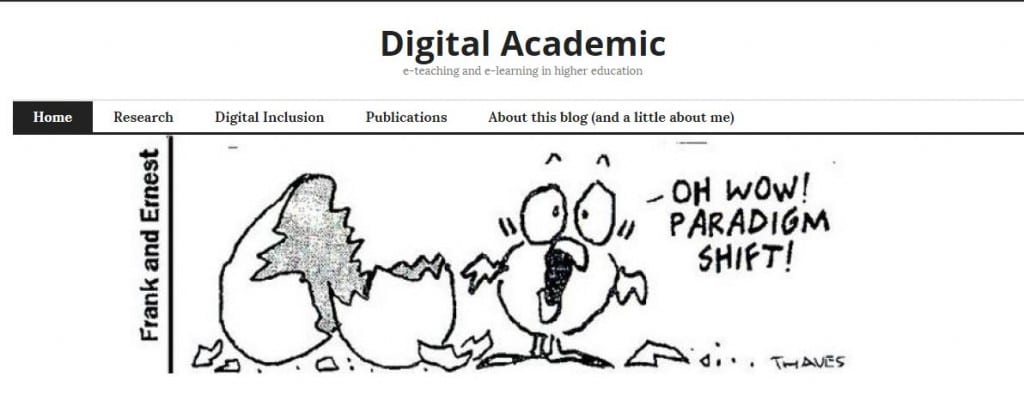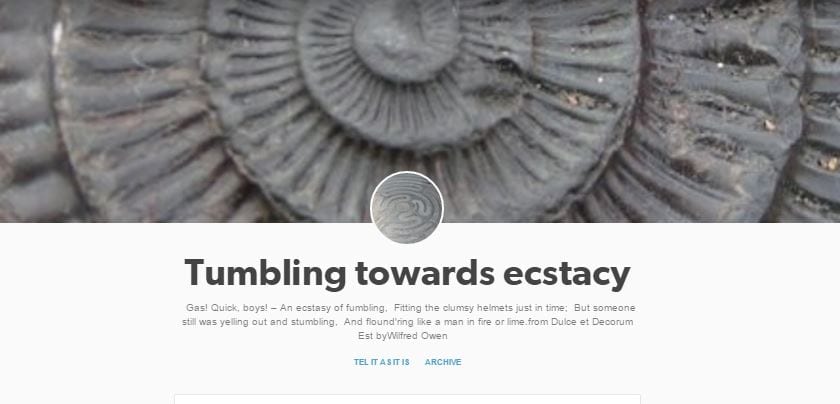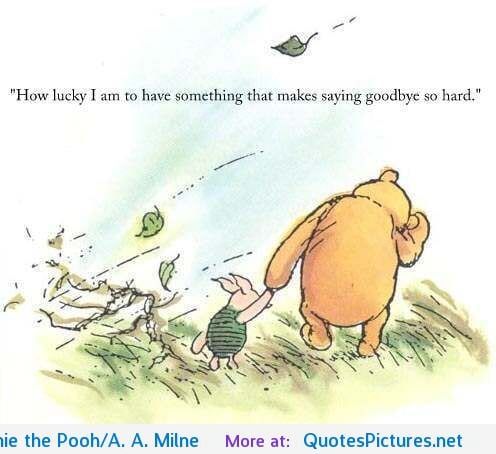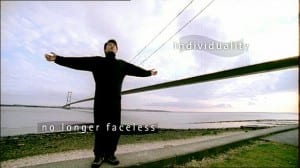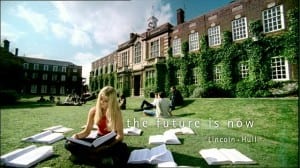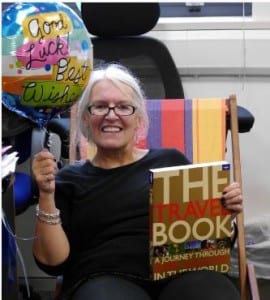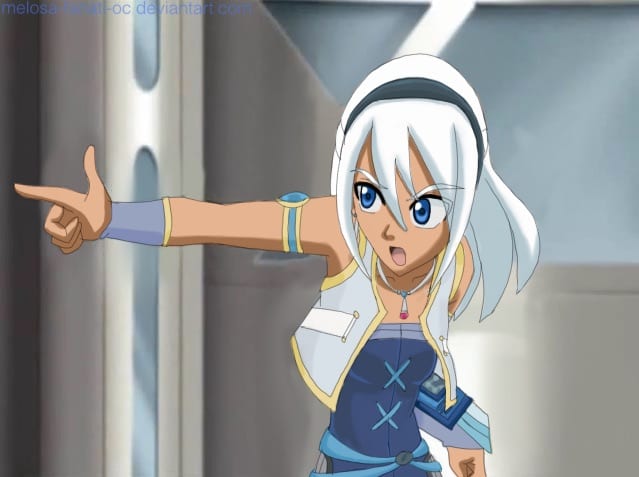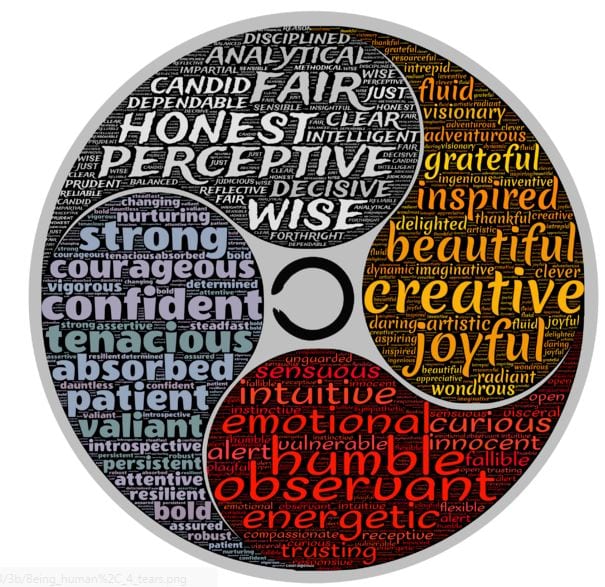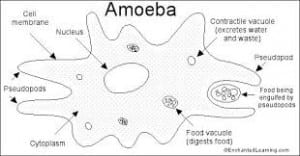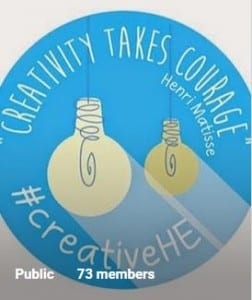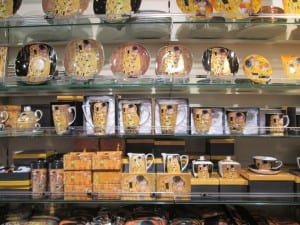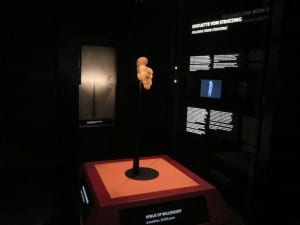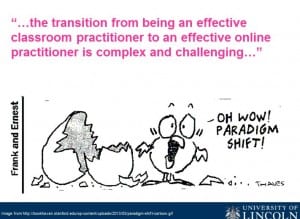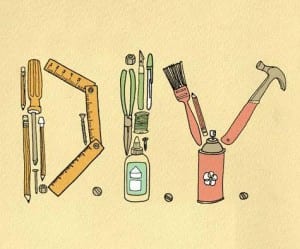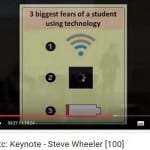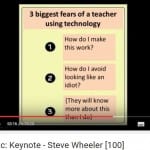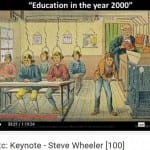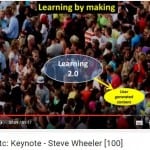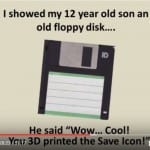I now have a new permanent WordPress blog called the Digital Academic at https://digitalacademicblog.wordpress.com
Tumbling towards Ecstasy
Gas! Quick, boys! – An ecstasy of fumbling,
Fitting the clumsy helmets just in time;
But someone still was yelling out and stumbling,
And flound’ring like a man in fire or lime.from
Dulce et Decorum Est
Wilfred Owen
Another corner of the internet
I’m digitally splattered here, there and everywhere online. My relationship with my laptop spins me off in all directions. I needed a new blog and Tumblr seemed to offer another corner of the internet – with my name on it – so I took it.
For the time being I am at http://ammonitie.tumblr.com/ My new blog is a subpage called TEL it as it is http://ammonitie.tumblr.com/lifeinhull a play on my new role as Technology Enhanced Learning Advisor – or is the subpage Life in Hull? It’s hard to tell with Tumblr. Like most things in life, when it comes to WordPress I’m learning more from its absence than I did from its presence!
Having a blog is essential. You can’t support TEL unless you’re in there, using it for yourself. Otherwise it becomes like those obligatory PGCert technology sessions delivered in the classroom, which works out fine because most participants are not great TEL users in the first place. The internet has changed life as we knew it but in many HEIs life goes on much as before.
TEL advisors and education developers need to be into TEL but not too much otherwise you risk becoming so TEL-evised you stop seeing the analogue roots and practices. TEL – and there should be a TET or a TELT too (technology enhanced learning and teaching – you read it here first!) – TELT is about the impossible balance. Namely being in two places at once and seeing both sides of the story. But as confortable and familiar as it feels to be back in my original work blog again, sadly this is no longer the place for my reflections.
I’m not a fan of Tumblr. It ‘s not as flexible as WordPress . It feels hidden away from my higher education networks and I don’t like the recommended sites which come up on my home page. Tumblr feels more like wasting digital space than using it authentically but I’ve still enjoyed setting it up, constructing a different identity, playing with new ideas and exploring how content management systems have changed, in particular the extent to which they assume digital knowledge and experience.
Blogging is promoted as a serious educational tool but the learning curve required to get started with platforms like WordPress and Tumblr is huge for anyone new to working with digital media. Tumblr is giving me the space I need at the present time and is also giving interesting additional insights I didn’t expect.
I’m still on Twitter as @suewatling and my new email is s.watling@hull.ac.uk
How lucky I am says Pooh to Piglet
Leaving Lincoln at the end of an era
I’ve become a grandmother to Duke, a 3 year old American bulldog. Quiet, affectionate, nervous in crowds, Duke was taken in by dog rescue in Manchester. We haven’t yet met but I’ve seen him on social media. He’s white and brown with an endearing heart shaped patch on his back and has already demolished his bed and eaten a monkey. New father is my youngest son, and tells me this is as close to a grandchild as I will get. I have step grandchildren and have had dogs but this is my first grand-dog. I’m as thrilled about Duke as all other new entries into my life. 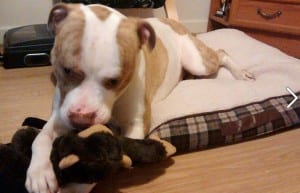
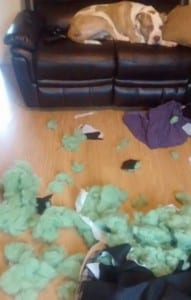
So far Duke’s Facebook debut has 176 likes
Social media has been on my mind.
For me this is a time of change; endings and beginnings but social media offers continuity regardless of time or place.
Thesis Whisperer published Know Your Limits last week, a piece I wrote about my experience of doctoral supervision.
The social media buttons beneath the post track the power of Twitter and Facebook for dissemination. The digitally shy risk being excluded from opportunities like these to link up with like minded people sharing similar interests and experiences.
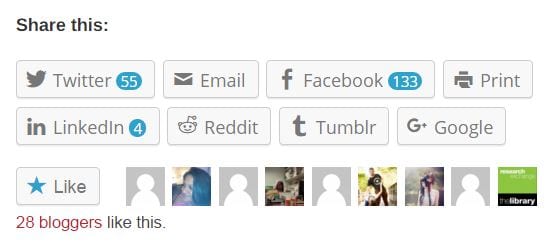
Know Your Limits was submitted last December. Much has happened since then. I’m leaving Lincoln to become an Academic Advisor for Technology Enhanced Learning at the University of Hull. I live in Hull so looking forward to a shorter commute and getting my hands digital again. I know where my virtual heart lies and it’s online.
I joined the University of Lincoln in 2000, working on what we called the Cottingham Road campus, now the University of Hull Business School and Hull and the York Medical School. Many years before, aged 17 and still at school, a friend and I signed up for a night class through Hull’s Continuing and Adult Education. Called Witchcraft in Melanesia, we misunderstood this was cultural anthropology and not the black hats and cats we expected. Later, in 1985, I took a ‘Return to Learning’ course there. It introduced me to Sociology, Psychology and Linguistics and led to enrollment on my first degree at Hull College of Higher Education, While I was there the College became Humberside Polytechnic. I graduated from the University of Lincolnshire and Humberside.
In 1998 I studied part-time for my first Masters degree at Hull. For the past five years I’ve been on a p/t degree in creative writing there. So me and Hull uni – we go back a long way. We have roots. I know my way around.
This move will be home from home in so many different ways.
I will miss Lincoln colleagues who’ve become friends but it’s only a 100 mile round trip. I should know. I’ve doing it since accepting my first post at Brayford in 2005. We all share common themes around education development in a digital world and will keep the digital flags flying on social media. There will be a new blog and in the meantime I can be found on Facebook, which I use for fun with family and friends. I tweet as @suewatling and am scattered across the internet via LinkedIn, Pinterest, Flickr, About me and multiple others which will vanish as the Lincoln email address I’ve had for the past 15 years is deleted. I will be digitally dead at Lincoln but digitally alive and kicking in Hull.
Looking forward to the future 🙂
crossing creative concepts and learning to be brave #creativeHE
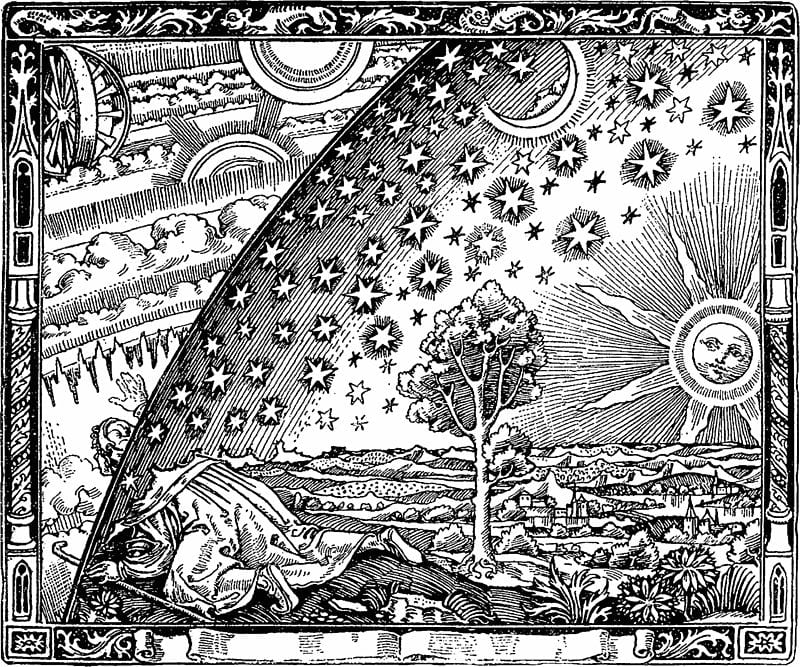
This has been a ‘concept crossing’ week on the Creativity in HE course.
I’m in a subgroup looking at creativity and emotions. Two words I wouldn’t have previously put together. Before this course I ‘d have associated creativity with areas like art, music, dance, theatre and knew Einstein had described scientists as artists. It seemed creative approaches to knowledge were needed in order to see connections which hadn’t been seen before but I’m realising this was a surface approach. I’d accepted other people’s views about creativity but hadn’t questioned or reflected on them for myself.
In terms of engagement Week 4 has been a bit fractured which can be a risk of extra-curricular activity. I adopted a strategic approach to the task and waited for others go first. A good example of how staff regress to student behaviours, like sitting at the back of the room on my night class – because I can. Not entirely entirely sure if I should be participating or facilitating with the task – or both – I was feeling a bit lost. Another good reason why prospective online teachers should try to have some online student experience first. Knowing I was still struggling with defining creativity, rather than listing ways it manifested itself, I did some reading.
In the paper Carl Rogers, Creativity and the RSA, Rowson (2014) ) refers to creativity as a novelty which is initially a subversive activity – because it’s different and goes against the norm. So with regard to creativity and emotions, confidence is required. Being creative involves not being afraid to be different. I realised I hadn’t been thinking about creativity from the inside. I could recognise how personal styles, e.g. impressionist art, were examples of innovative ways of seeing the world, but hadn’t made the leap from knowing to understanding. When I wrote my blog post about being less creative than I thought I can see now this was also saying I’m less brave than I’d like to be.
Creativity is much more connected to emotions than I’d realised. It’s about having personal courage, confidence and conviction so is intimately connected with individual identity. I enjoy the power of words to describe, resonate and challenge. I like writing performance poetry; tricky line rhymes in iambic pentameter for speaking out loud. But I get nervous about performing. In my head I’m always looking for creative ways to do presentations. I get ideas but don’t put them into practice. Instead I stick to what’s worked before, believing it’s more likely to work again. I don’t take risks so my performances don’t stand out as much as they might if I was more brave.
I can see how being authentically creative, or taking a creative approach, requires emotional as much as cognitive expertise. It’s having the passion and personality to go public, because creative agency is validated by the structural processes of institutions and the media. As well as the ability to think laterally, creativity is about what you do with the outcomes. We are all creative but we deal with it in different ways. Thanks to taking part in this fascinating open online course, I’m starting to see how ultimately being creative is about being human.
Like an amoeba we are creativity in action #creativeHE
The open online course Creativity and Higher Education is making me think. Chrissi asks what is the difference between face to face and online? I say it’s the pedagogy of uncertainty – there’s so much you don’t know and can’t predict. Then Chrissi asks what is the difference between traditional online and open courses? Even more uncertainty. The open structure – emergent ideas – changes in direction – we’re creating as we go along – responding to the unexpected – like an amoeba the course is alive and moving about, ever changing its shape. How exciting is that? We are ‘creativity’ in action.
Last week I blogged about feeling less creative than I thought. This week’s activity reaffirmed it. Identify 3 things you would not use in your teaching.* It was so difficult. I thought everything could be used to demonstrate some point or other. The best response was Jonathan Purdy (from Australia but distance means nothing online) who used categories. What do his teaching tools need to do and does the object support it. I took the question literally and thought Jonathan’s more lateral approach was a perfect example of creative thinking.
In my early HE days as Widening Participation Project Officer I worked with John Knowles who coordinated a Day at University for school pupils in Hull and Lincolnshire. These days were creativity in action. I still remember counting in Japanese! The #creativeHE activities remind me of De Bono’s Hats and Buzan’s paperclips from those days. It was the turn of the century – 2000-2004 – when the internet was new and social media hadn’t happened. How much has technology changed what we do? Have VLE encouraged or dissuaded creative approaches to learning and teaching?

On the course I’m setting up a group looking at digital creativity (yes that’s right folks – feel the google-fear and do it!) At the SRHE Conference in December I’m presenting on the the Digital University and at Bett Technology in January I’ll be talking about TEL adoption. One of my themes is the creative use of VLE – or the absence of anything posing a serious challenge to the dominance of the Lecture – so this might be a useful opportunity to share ideas.
Lectures remain the commonest teaching activity in higher education. Often accompanied by presentation slides – usually powerpoint, for many this is the limit of their digital discoveries. Lecture content might make it onto the VLE – before or after the main event – but there are still those who believe if they put their lecture notes online their students won’t attend.
The commonest word in the literature of VLE is transform e.g. the transformative power of elearning and VLE as transformers of higher education but we’re still waiting. Most VLE resemble digital document dumps. Examples of the creative digital campus are isolated in pockets with widening divides between those who do and those who don’t (i.e. get the whole digital thing).
I feel for anyone who teaches or supports learning and is told here’s the VLE, get on with it. Affinity for digital education is not intrinsic. If tech is not part of your life or subject-expertise how can you be expected to develop digital confidence. It’s a question which has taken a long time to be asked. The risk is those with the answers are not those who understand what techno-fear feels like. We need more creative ways to manage digital adoption.
Next week in the group I’m going to ask for member’s thoughts on creative digital environments. Discussions might go off in directions I haven’t even considered. This is the challenge, the fun and the power of digital education. For a short period of time we have come together in a virtual collaboration. When the course is ended we’ll go off in our separate ways, but hopefully richer and more creative for having taken part in this unique learning experience.
* Activity – name three things you would not use in your teaching
Alcohol – during my first degree a psychology lecturer asked for a volunteer to drink vodka so we could assess the influence on cognitive abilities – during the hour she became more impaired and struggled for the rest of the day. It felt wrong then and still does – I like a glass of wine on a Friday night and another one (or three) over the weekend but for me alcohol and work never go together.
creepie crawlies and slidey slimies – I couldn’t bear the thought of carrying them around never mind having to study them close up – yuk!
Unlike Mrs Heerkens in Holland, I won’t be stripping down to latex body suit any time soon.
https://www.youtube.com/watch?v=JRtW4D0ycA8c
I may be less creative than I think #creativeHE
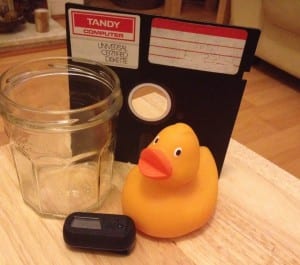
The course Creativity for Learning in Higher Education #creativeHE ticks a lot of my boxes. It’s about higher education in 21st century, teaching online, creative thinking, using social media, its open, free and above all is about the digital – which at the end of the day has always been my research and passion. This blog post is my cause memory jog as much as a reflection; a questions without answers approach. Online education supports postmodern bricolage styles of learning – much of which can go unrecorded so this is an attempt to catch some of the transient experiences.
I arrived a week late! Not the best of beginnings but a well thought out course like this from Chrissi Nerantzi can take it. A good course is like a dot to dot picture. Each dot is a link. A place to go. An activity to engage with. A paper to read. In my case I haven’t yet joined them up. But I don’t have to in order to participate and learn. I’ve been selective and this is typical of the student centred approach online learning environments have to support. Capacity for multiple approaches and pathways is essential. Online design needs a holistic structure where the parts really are greater than the whole. Teaching online is about facilitation (with a capital F), about providing a mix of opportunities and supporting exploration through them. Any online teacher who tries to replicate traditional face-to-face teaching practice is likely to fail. Any online student who expects to be taught will be disappointed.
Online courses also need to understand how digital ways of working are unique to each individual taking part. Digital literacies are like fingerprints and we all have our own distinctive styles of engagement. I haven’t done as much as others but I’m not looking for accreditation which maybe supports a more fractured level of engagement. For me this is a learning experience and within the first week I have learned the following:
- I may be less creative than I think.
- Creativity is a social construct.
- Online communication is open to a variety of interpretations.
The video by Jess Haigh demonstrated the power of multimedia for online introductions. I learned so much more about Jess from seeing and hearing her than from reading text. This was a creative approach I wanted to copy. It was interesting to see the response to my comment to the group ‘Would like to post a video too but hit barriers of place, time and noise levels (excuses!)’ . It appeared to be interpreted as lack of confidence rather than lack of opportunity and demonstrated the vagaries of online communication where we see what we think rather than what is being said.
I’ve skimmed some of the reading around creativity. My first thoughts are how it sits between the subjective and objective spheres. We might produce what we consider to be creative outputs but their acceptance depends on the interpretation of others. Through the course I picked up on the #twistedpair invitation from Steve Wheeler to make unlikely pairings and relate them to teaching and learning, in my case Klimt and the Venus of Willendorf. Whether this demonstrated creativity or not can be measured by likes and tweets – but in turn these are related to access parameters and the subjectivity of others. I’ve ended the week thinking much more about creativity as a social construct and how to ‘know’ if I’m a creative person or not; I suspect I may be less creative than I think!
I have learned a lot so far and this is why I do it. Evenings, weekends, early hours of the morning. I’m a learning addict but I also want to discover how the digital can support the student learning experience. The one thing I know for sure is the process is helped where staff who teach become online students themselves first.
My #twistedpair are Klimt and the Venus of Willendorf
Still processing last week in Vienna (culture and cake – what’s not to like?!). Reflecting on the art and history, my #twistedpair are Klimt and the Venus of Willendorf. I’ve used them as tools for considering the nature of knowledge – in particular the need for information literacies (of the digital kind) in order to support the validation of online search results.
All over Vienna the gold bricolage style of Klimt can be found on fridge magnets, plates, cups, bookmarks and note books. Klimt led the group who built the Secession in Karlsplatz; a building designed to provide gallery space for alternative artists with the phrase To every age its art, to every art its freedom above the entrance. Born in Vienna, Klimt died there in 1918.
We know he was an expert draftsman who could paint faces like photographs but chose to develop a unique style which has become widely recognisable, for example the stylised collage construction of the Kiss and Adele Bloch-Bauer 1. Personal letters, photographs and contemporary records contribute to a knowledge base which helps recreate his ambitions, motivations and inspiration. Today, the internet makes it possible to gather a mass of Klimt information which can be confirmed or rejected through access to academic peer reviewed literature and documentary films. In this way differences between facts and personal, maybe biased, opinion can be explored.
In contrast, knowledge about the Venus of Willendorf statuette poses a challenge. Currently residing in the Vienna Naturhistorisches Museum, Ms Willendorf is a case of once seen unlikely to be forgotten. Breaking a number of 21st century taboos around female nudity, in much the same way Klimt broke conventional expectations around art, both Klimt’s stylised images and the Woman from Willendorf have become iconic images of their age.
Named after the place of her discovery, a village above the banks of the Danube between Vienna and Spitz, she is just over 4 inches tall and carved from oolite limestone with a physical curve which suggests an intention to be held against the palm of a cupped hand. The latest dating is 30,000 years BCE but her original purpose is unknown. Debate continues about the lack of face, the apparent braiding covering her head, the absence of feet and any meaning which might have been originally attached to her body shape. Most of the knowledge we have is speculative and can be seen to be largely influenced by the social capital of the writer. For example, compare the description by Christopher L. C. E. Witcombe with the information from the Brooklyn Museum.
Unlike Klimt, there is less of a reliable knowledge baseline about Ms Willendorf but an internet search will bring up a number conflicting opinions about them both. Unless distinctions can be made between peer reviewed offerings and personal opinions, it can be a challenge for the digitally naïve to distinguish between what is reliable and what should be discarded.
To be digitally capable involves understanding the potential limitations of digital knowledge. Higher education institutions are looking to find ways to support students develop digital graduate attributes, for examples embedding digitality into curriculums as in the Making Digital Histories work at the University of Lincoln (follow @MakDigHist and https://www.facebook.com/makingdigitalhistory). One way to encourage critical reflection on the validity of digital knowledge is setting tasks like these – unlikely pairings and reflecting on how to authenticate what is known about them. Not forgetting the need for institutional support for academic staff to develop their own digital pedagogies and practices as well.
all images my own…
Do you keep a blog?
Doug Peterson says ‘One of my first questions when I meet an educator is what’s the address of your blog?’ Doug’s JISC piece lists reasons for having an online presence. These include blogging for research, employability and simply yourself. One of the reasons I hear for not blogging is not having anything to say. Really? Nothing? Doug says there’s no such thing as a bad blog. Well, with respect, I disagree. There are plenty of blogs which are too long, too wordy and plain boring but I get his point. Better to blog badly and have an online presence rather than not at all. It’s about digital engagement. Social media are creating niche networks within higher education. Activities like blogging and tweeting emphasise divides between those who do and those who don’t. The gap is getting wider but it’s largely invisible. Like attracts like. If you do it’s with others who do. If you don’t you are less likely to be reading this in the first place.
This week I picked up from a tweet a piece in THES by Bob Harrison about making FE more of a digital experience. Here is the same old language of technology transformation. ‘Hopefully says Bob, ‘this time the transformative potential of technology for learning will be recognised rather than ignored’ People have been saying this since 1997 and the Dearing Report into the future of higher education. Today’s use of technology is mostly limited to uploading documents to a VLE. While this offers 24/7 access to information, the VLE can do so much more in terms of collaborative interaction. The problem is shifting from a repository approach to an activity one. Bob says we need ‘critically, refreshed workforce skills’, a ‘paradigm shift in how learning programmes are designed, delivered and assessed’ (cue favourite image!) and it’s ‘important to remember technology-enhanced blended learning is not a cheap option.’ We know all this. It’s the doing it which is the problem. The article linked to an Opinion piece in the TES about teaching digital literacy.
(This is the risk of social media – one thing leads to another and another until an hour is gone – does this make me digitally literate, a champion procrastinator or internet addict?)
Matt Dean says ‘FE needs to work out how to teach digital literacy.’ It was reminiscent of the 2007 blog post about technically illiterate teachers. The question for Matt is not should we teach digital literacy, but how to do teach it well. Good question but Matt is writing about students. The academic staff perspective is missing. HE have the same issues. I think we need to go back further and look at how teachers develop their own digital skills and identities in the first place. To see digital capabilities as ways of being and seeing as well as knowing which buttons to click. Digital divides are growing but for most institutions, access has become less of an issue than meaningful engagement. This is where help is needed. Rather than ‘teach digital literacy’ in isolation, it should be embedded in the curriculum to help ensure digital graduate attributes. In staff development and teacher education programmes to support staff trying out digital pedagogies and practices in safe supportive environments. We not only need to change what we do but change how we think and this is the challenge.
Following B&Qs advice; DIY to DIFY with TEL
B&Q have announced a shift in emphasis from DIY to DIFY. Rather than DIY and do it themselves people are now setting themselves as DIFY – encouraging other people to pay them for doing it instead. I imagine many colleagues being relieved if HEIs adopted a similar attitudinal shift and instead of having to manage their VLE and TEL experiences themselves, they could have someone else to do all that ‘digital stuff’ instead.
A teaching role contains assumptions – an expectation you will know how to use the technology – but practicing at home is never the same as being centre stage. It’s still common to see conference presenters struggle to put PowerPoint onto full screen especially when Microsoft moved the icon from left to right. Environment changes make the familiar become strange. The digitally confident can take change in their stride but less so the digitally shy. It has less to do with age and more with context – a point usefully raised by Steve Wheeler’s ALTC15 Keynote.
I’ve been watching this on YouTube and reflecting on ‘Lecture Capture’. I can stop, start, rewind, extract images, leave it and go back to it. If the auto-generated captions had been edited it would have been a complete learning experience. Multimedia too often leads to a surface approach. To gain a deeper understanding, to make connections with what is already known and create the fuel for reflection, I need to work with words. I like to have the transcript as well, to be able to annotate it, transfer key points to a mindmap. We all learn differently and effective pedagogies need to enable and support multiple learning requirements.
Back to DIY and DIFY. Too often the DIY approach means not only creating our own digital content but creating it for ourselves. What I’ve called the MEE Model. We use a Mouse to navigate, our Eyes to see the monitor and Ears to listen to content and how it’s easy to assume everyone else uses a computer and accesses the internet in similar ways. We need to shift from DIY to DIFY. Consider we are creating online content for someone else – who might that transcript you think you haven’t got the time to do or content in a customisable format so they can change its appearance to suit their own preferences and needs i.e. Word rather than PDF.
It’s the context which matters. Steve Wheeler and his students, Kate Bartlett and Becca Smallshaw, talked about how adopting the role of teacher brings assumptions of digital competence, the expectation you know what to do, reinforced by two slides comparing the difference in attitudes between staff and students with regard to TEL.
These reinforce how digital divides on campus get constructed. This week I heard someone defend staff not getting to grips with ‘wizzy’ powerpoint. Not a term you hear so often these days but if presentation software is a challenge, then using app based social media or developing interactive virtual learning experiences is less likely to happen. PowerPoint is a useful digital competence baseline. Too often it’s not a good experience; too much text, too small to read, words over graphics, content flying in with noisy transitions.
Steve made great use of slides with images. When done well this is great to watch. Here’s some examples of how Steve used pictures to tell stories. But it’s a brave step to take. Easy to suggest but harder to do.
There’s a risk digital basics are getting forgotten. We ‘train’ staff on using the technology but don’t ‘teach’ digital pedagogies and practice. Changing practice is never easy and when it comes to digital ways of working – which are personal and individual – most people cling to what they already know. If it’s worked before it’s reliable and can be trusted to work again.
Change is needed, Learning technologists become teaching technologists. Technology ‘trainers’ be technology educators. Then we could focus on context. Bring in accessibility and inclusive practice. Promote interaction rather than repository style models of usage. DIY is about the singular educational experience. It limits knowledge and understanding of how people manage online whereas DIFY is about others. It incorporates diversity and difference and when is comes to the digital, this is possibility the most important step towards an equitable education.
